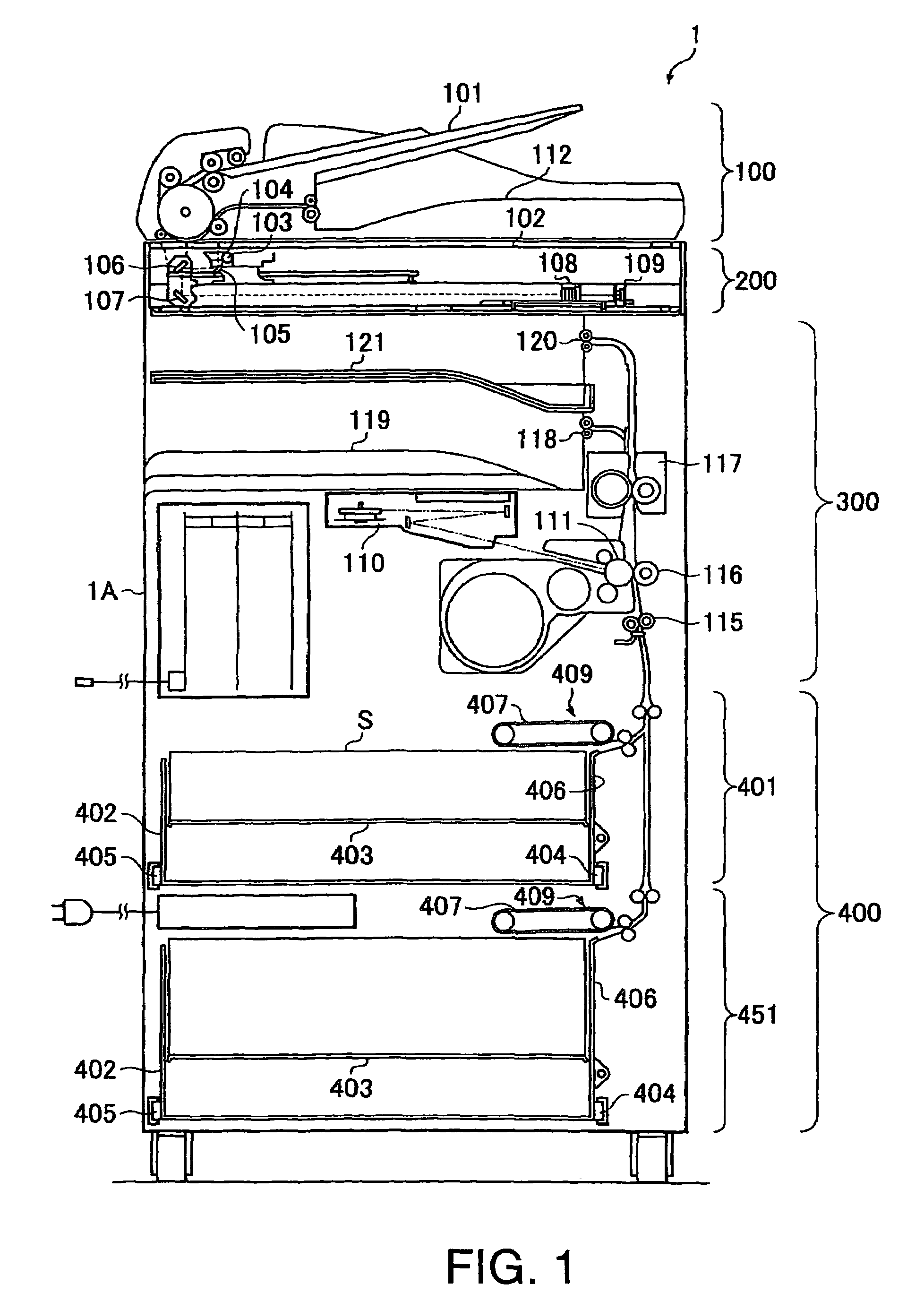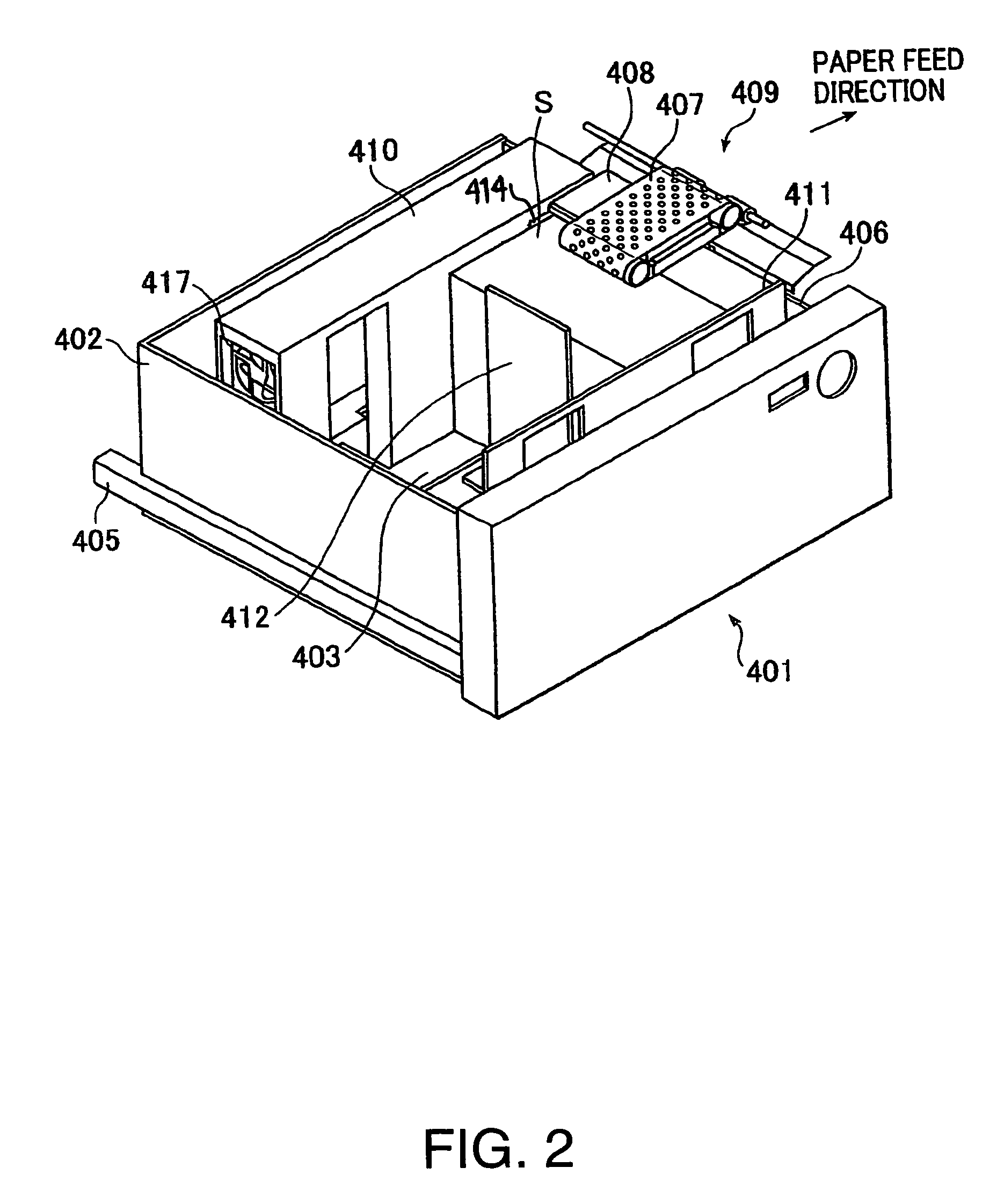Sheet feed method, a sheet feeder, and an image forming apparatus incorporating the sheet feeder
a feeder and sheet technology, applied in the direction of thin material processing, article separation, transportation and packaging, etc., can solve the problems of mis-feeding and double-feeding occasionally, the risk of inducing skew increases significantly, and the known method has an important disadvantage, so as to reduce the risk of the element getting damaged, not too much space, and less prone to damage
- Summary
- Abstract
- Description
- Claims
- Application Information
AI Technical Summary
Benefits of technology
Problems solved by technology
Method used
Image
Examples
Embodiment Construction
[0018]FIG. 1 represents an imaging device as is known from US 2004 / 0089994 A1 and described elaborately in the paragraphs [0024] to [0034] of this US patent application which paragraphs are incorporated herein be reference. This apparatus includes an image reader 200, a printer 300 and a paper feed section 400. This section has paper decks 401 and 451 that share a paper feeding mechanism.
[0019]The image reader is equipped with a so called ADF 100. This ADF automatically feeds original documents to the image reader 200, in particular from tray 101 to glass platen 102. Thereafter, it discharges the sheets to paper discharge tray 112. When the original passes platen 102 it is read by scanner unit 104. This unit comprises lamp 103, the light of which is reflected via the original to lens 108 and further through mirrors 105, 106 and 107. Ultimately, the light forms an image on image sensor 109. This sensor converts the optical image into image data which data are outputted from the senso...
PUM
 Login to View More
Login to View More Abstract
Description
Claims
Application Information
 Login to View More
Login to View More - R&D
- Intellectual Property
- Life Sciences
- Materials
- Tech Scout
- Unparalleled Data Quality
- Higher Quality Content
- 60% Fewer Hallucinations
Browse by: Latest US Patents, China's latest patents, Technical Efficacy Thesaurus, Application Domain, Technology Topic, Popular Technical Reports.
© 2025 PatSnap. All rights reserved.Legal|Privacy policy|Modern Slavery Act Transparency Statement|Sitemap|About US| Contact US: help@patsnap.com



